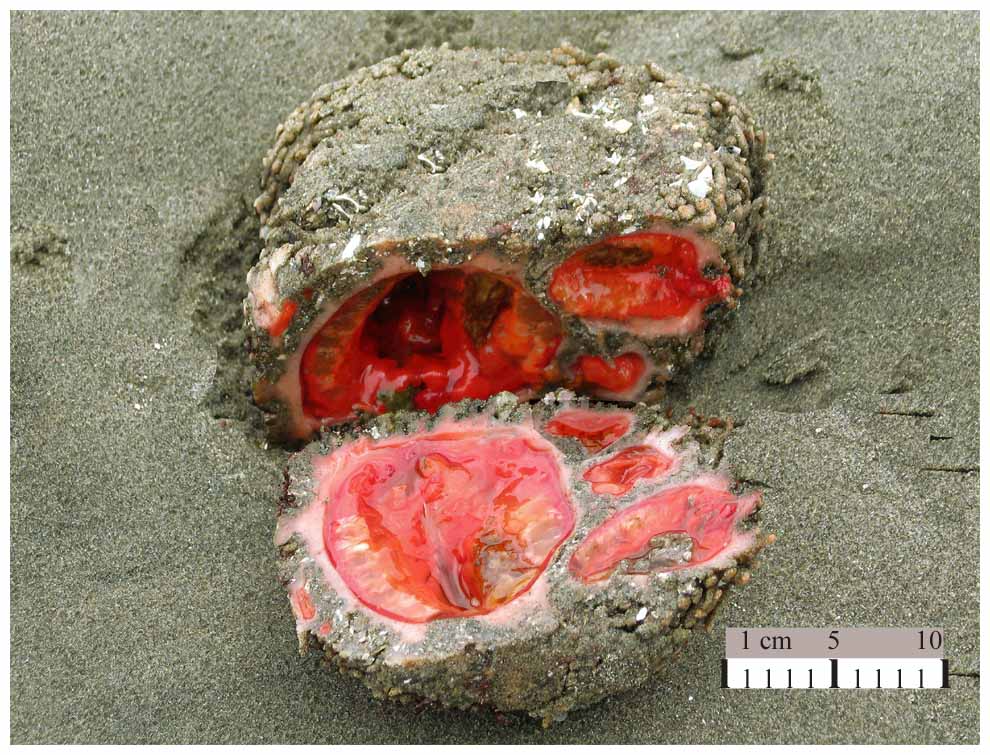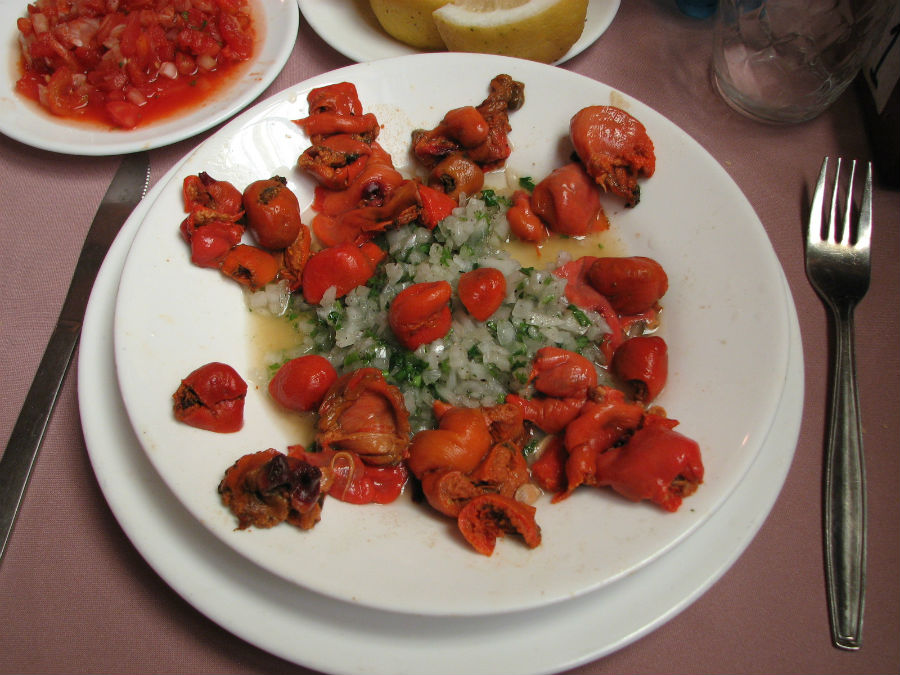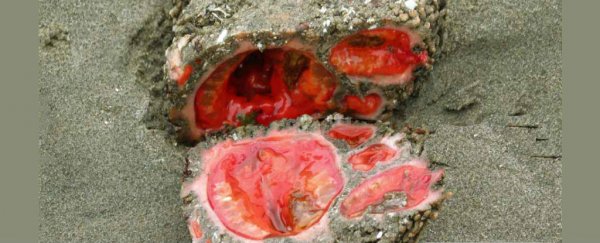It might look like someone's gone and cracked open a thunderegg, only to find fresh tomato inside, but that's Pyura chilensis - a bizarre sea creature found on the rocky coast of Chile and Peru.
Belonging to a class of sac-like marine invertebrate filter feeders called sea squirts, P. chilensis's strange, clear blood accumulates the rare element vanadium so easily, its concentration can be 10 million times higher in this sea creature than in the surrounding seawater, and no one knows why.
P. chilensis is a type of tunicate - sea creatures named after their thick exteriors (or 'tunics') made from tunicin, which is a hardy matrix of cellulose-like material that helps them attach to a hard surface, where they'll remain for their entire lifespan.
The insides of this tunic are lined with an epidermis and a muscular band, and inside these layers lurks the main body of the animal.
P. chilensis feeds and breathes through its tunicin using two siphons that connect its internal body to the sea around it. One of these siphons are used for exhaling and the other for inhaling.
It eats by inhaling the water through one siphon, filtering out any edible microalgae, and exhaling the processed water back out the other siphon.
Somehow, this process has allowed it to accumulate incredible quantities of the silvery metal vanadium - the purported 'next big thing' in battery storage.
In fact, sea squirts have been found to be the only organisms in animal kingdom to accumulate high levels of vanadium in their blood plasma, and exactly why and how they do it remains unknown.
Here it is, in all its glory:
 Arvid Puschnig
Arvid Puschnig
And here it is at a restaurant in Chile:

P. chilensis sea squirts are often found in densely packed colonies to make reproducing much easier, but if they end up on their own, they've figured out a pretty genius way to bypass the whole 'breeding partner' problem altogether.
The species is hermaphroditic - meaning it has the gonads of both a male and a female - and these organs can release eggs and sperm into the water simultaneously. The sex cells will meet in a fertile cloud, and if the sperm-egg collisions are successful, they'll produce tiny tadpole-like offspring.
In 2005, biologists Patricio H. Manríquez from the Universidad Austral de Chile and Juan Carlos Castilla from the Pontificia Universidad Católica de Chile detailed this asexual behaviour for the first time, giving it the perfect name of "selfing".
They collected 30 sexually mature P. chilensis from habits in central and northern Chile, and set them up in lab tanks as isolated and paired individuals to assess the success of fertilisation and offspring survival.
First, the isolated individuals were placed in plastic bottles, and were left alone for 90 days, free to do all the selfing they wanted.
Next, the researchers combined pairs either from the same population, or from two different populations, to see how well they would breed, compared to those doing the selfing.
A third experiment had P. chilensis individuals kept in isolation for one to 16 months, to see if extended alone time would improve the success of selfing.
Finally, the researchers conducted 'manipulated fertilisation' - removing eggs from the specimens and fertilising them with extracted sperm in Petri dishes.
They found that P. chilensis is born male, before becoming 'cosexual' - having both male and female gonads - in its adolescence.
They also found that given the choice - that is, if situated around other individuals - the species prefers to breed via cross-fertilisation with another individual:
"Given that more events of natural egg spawning followed by successful settlement and metamorphosis were recorded in our paired specimens and in our manipulated cross trials … it appears that cross-fertilisation predominates in this species."
A greater number of fertilised eggs resulted from the paired specimens, which suggests that cross-fertilisation predominates because it's more effective. But they were careful to note that selfing did not produce inferior offspring.
"No perceptible differences in fertilisation, settlement and metamorphosis success among self and outcross progeny were found," the researchers report.
So, when stuck alone in the ocean, selfing allows loner P. chilensis individuals to still pass on their genes. Thanks, nature.
